At the post-match presentation in Cuttack after the conclusion of the series-decider between India and the West Indies, captain Virat Kohli evaluated that 2019 was one of the best years in Indian cricket apart from that 30-minute mayhem at the World Cup.
The Indian captain was spot on with his observations as the Men in Blue completed a remarkable year achieving stupendous success across formats. Virat Kohli led from the front with 2455 international runs in 2019 across formats and finished with most international runs in a calendar year for the fourth time in a row.
In this article, let us analyze Team India’s performances across formats in 2019.
Test matches
Played – 8, Won – 7, Drawn – 1, Win Percentage - 87.50.
The year 2019 started on a disappointing note for India in the sense that they could not force victory against Australia at Sydney after scoring 622 in the first innings and restricting the opposition to 300. After enforcing the follow-on, India could not complete the task as rain played havoc on the fourth and fifth days resulting in a total loss of 170 overs. However, Kohli’s team still went on to become the first Indian team to win a Test series against Australia in Australia.
India went on to win the next 7 Test matches in 2019, 4 of them by an innings, a new record in Test matches. By beating Bangladesh at home, India achieved its 12th consecutive home Test series win. India has now won 28 of their last 35 Test matches at home with a solitary loss against Australia in 2017.
Positives for India in Test matches
#1 The surfacing of Rohit Sharma as a Test opener

The emergence of Rohit Sharma as a successful Test opener has been the biggest positive for Team India in the year. After being asked to open the innings against South Africa at Vishakhapatnam, Rohit scored 529 runs in 4 innings at 132.25 with 3 centuries including a double hundred. Rohit achieved this feat against a decent South African bowling line up.
His opening partner Mayank Agarwal was equally impressive having aggregated 754 runs in the year with 3 centuries. Their successful opening partnership eased the demands on the middle-order concurrently facilitating the team to field 5 bowlers to take 20 wickets in Test matches.
#2 The collective efforts of the fast bowlers
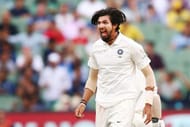
The Indian pace bowling quartet of Mohammed Shami (33 wickets), Ishant Sharma(25), Umesh Yadav(23) and Jasprit Bumrah(14) combined to take 95 wickets in the year. They were relentless with their pace and accuracy and were coming at the opposition batsmen in rotation.
Bumrah could play only 3 Test matches in the year due to injury but his replacement, Umesh Yadav made use of the opportunity presented to him accounting for 23 wickets at an average of 13.65.
Mohammed Shami was the leading wicket-taker for India with 33 wickets and the 6th leading wicket-taker in the world in 2019, while Ishant Sharma occupied the 11th position.
The domination of the Indian fast bowlers was complete in the first day-night Test match in India at the Eden Gardens, Kolkatta against Bangladesh. It was in this Test match that the fast bowling trio of Ishant Sharma, Umesh Yadav, and Mohammed Shami took all 20 Bangladeshi wickets. It was also the first time in the history of Indian Test cricket that the Indian spinners went wicketless in a Test match at home.
#3 Wriddhiman Saha’s comforting presence behind the wicket

When Wriddhiman Saha returned to Test cricket in the series against South Africa in October, Kohli expressed that Saha was the best wicket-keeper in the world. The diminutive wicket-keeper lived up to his Captain’s words by taking some blinders behind the wicket.
Playing in his 37th Test match at Kolkatta, Saha completed his 100th dismissal in Test cricket. The comforting presence of Saha behind the wickets worked in favor of the Indian bowlers and lifted the overall fielding standards of the team.
Looking back, the year 2019 was a near-perfect year for the Indian team in Test matches.
ODIs
Played – 28, Won – 19, Lost – 8, Win percentage – 68
Series wins – 4 out of 5
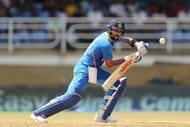
The year started on a high note for India in ODIs when they won the ODI series against Australia in Australia by a 2-1 margin. After losing the first ODI in Sydney, India came back to win the series by registering comfortable wins in Adelaide and Melbourne. In the process, Kohli’s Indians became the first Indian team to win both the Test and ODI series against Australia in Australia.
India followed up their most successful tour Down Under by thrashing New Zealand 4-1. Though India lost to Australia at home, they were one of the strong favourites to win the ICC World Cup. India steamrolled every other opponent except host England to reach the semi-finals in striking style.
Due to inclement weather, the only other team that India did not meet in the league stage was New Zealand which proved to be their nemesis in the semi-finals. In the end, it was a disappointing World Cup campaign for Team India despite Rohit Sharma scoring 5 centuries in the tournament. The subsequent series wins against West Indies both at home and away was no compensation for the World Cup disappointment.
Positives for India in One-day Internationals
# 1. The re-discovery of KL Rahul as an opener in white-ball cricket
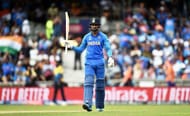
The injury to Shikhar Dhawan in the World Cup forced India to push KL Rahul to the opening position. KL Rahul exhibited his class as a flamboyant opener in white-ball cricket with some breathtaking shots. While he was criticised during the World Cup for a lack of intent, he began to attack the bowlers more at the start of the innings as the year wore on.
His positive intent at the start of the innings allowed his partner Rohit Sharma to settle down at his own pace to play a long innings thereafter. Rahul finished the year with 572 runs at an average of 47.66. With his consistent performance and aggressive approach at the top, Rahul ensured that the absence of Shikhar Dhawan was never felt.
#2 The advent of Shreyas Iyer as the new number 4 batsman

The number four position in the batting order continued to plague India right through the World Cup. After a disappointing World Cup, India zeroed on to Shreyas Iyer as the reliable Number 4 batsman in the team. Since his return to the team, Iyer scored 4 consecutive fifties to justify his place and batting position in the team.
With his composed approach to batting, Iyer could be the perfect No 4 batsman for India who could mix caution with aggression. The performances of Shreyas Iyer and Rishabh Pant in the middle-order in recent times has to a certain extent nullified India’s over-reliance on the top three batsmen.
#3 The return of Mohammed Shami to white-ball cricket
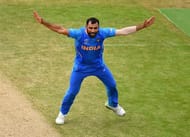
Mohammed Shami was a runaway success in ODIs in 2019. During the year, he took 42 wickets at an average of 25 including a hat-trick to win a World Cup match against Afghanistan. He was the highest wicket-taker in the world in ODIs in 2019. To further accentuate the enormity of his achievement, Shami was the only Indian bowler to have achieved this feat in two calendar years.
Throughout the year, Shami was unstoppable as he continued to run through the opposition across all formats, more so in ODIs. Through sheer hard work, Shami remained fit right through the year to formulate his precious contribution to the team.
#4 The progress of Ravindra Jadeja as a genuine all-rounder
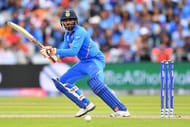
Ravindra Jadeja had a wonderful year with the bat. In the absence of Hardik Pandya, Jadeja consolidated his position in the team as a genuine all-rounder with some crucial cameos. Jadeja, along with MS Dhoni, very nearly won the semi-finals of the World Cup for India.
Jadeja grew in stature as a batsman after that World Cup innings and showed plenty of patience while batting. His refined approach to batting allowed India to play another regular bowler at the expense of a batsman. The presence of Jadeja was the main reason behind India achieving the perfect team composition in ODIs.
T20 Internationals
Played – 16, Won – 9, Lost – 7, Win percentage – 56
Series won – 3, Lost – 2, Drawn - 1
By comparison, India had an average year in T20Is. During the year, India lost two consecutive series against New Zealand and Australia while they managed to draw level in the series against South Africa at home. India also had the ignominy of losing to Bangladesh for the first time in a T20I. At times, one gets the feeling that India’s mediocre performances in T20Is were masked by their superlative performances in Test matches that followed the T20 series.
The sloppy ground fielding, frequent shelling of catches, Rishabh Pant’s untidy work behind the wickets, poor reading of DRS junctures, uncertainty over MS Dhoni’s future and the lack of penetration in bowling on batsman-friendly wickets continue to haunt Team India’s progress in white-ball cricket, more so in T20Is. Going forward, one gets the feeling that India would certainly miss Dhoni more behind the wickets than in front of it.
Despite the downsides, there were some positives for India in T20Is.
Positives for India in T20 Internationals
#1 Shivam Dube as the new option as an all-rounder

Shivam Dube made his debut for India in the series against Bangladesh. Though he didn’t get much opportunity to impress with the bat, he came good with the ball in the series-decider at Nagpur when he took 3 wickets in the middle which derailed Bangladesh’s chase.
Dube showed his skills with the bat against West Indies when he scored 54 off 30 balls at Thiruvananthapuram. Promoted to bat at Number 3 position, Dube showed his power-hitting clobbering 3 fours and 4 sixes.
Though these are still early days, Dube could be the batting all-rounder that India is looking for who could also do a bit of seam bowling.
# 2. Deepak Chahar’s progression as an effective swing bowler

Deepak Chahar had a dream year. He registered the best T20I bowling figures when he took 6 for 7 in 3.2 overs including a hat-trick against Bangladesh, the first by an Indian bowler in T20I.
This season Chahar has been used both upfront and at the death where he proved to be more effective. He finished the year with 16 wickets in 32 overs at an economy of 6.53 per over. Chahar’s progression as an effective swing bowler presents India with another reliable bowling option.
#3 The evolution of youngsters

The performances of youngsters like Navdeep Saini, Shivam Dube, and Washington Sundar augurs well for India going into the T20I World Cup. While Saini impressed one and all with his extreme pace, Sundar was accurate in power play overs.
With other youngsters like Sanju Samson, Prithvi Shaw, Mayank Agarwal, and Shubhman Gill waiting in the wings, the Indian cricket and the Indian fans are in for some exciting times.
Follow IPL Auction 2025 Live Updates, News & Biddings at Sportskeeda. Get the fastest updates on Mega-Auction and cricket news
